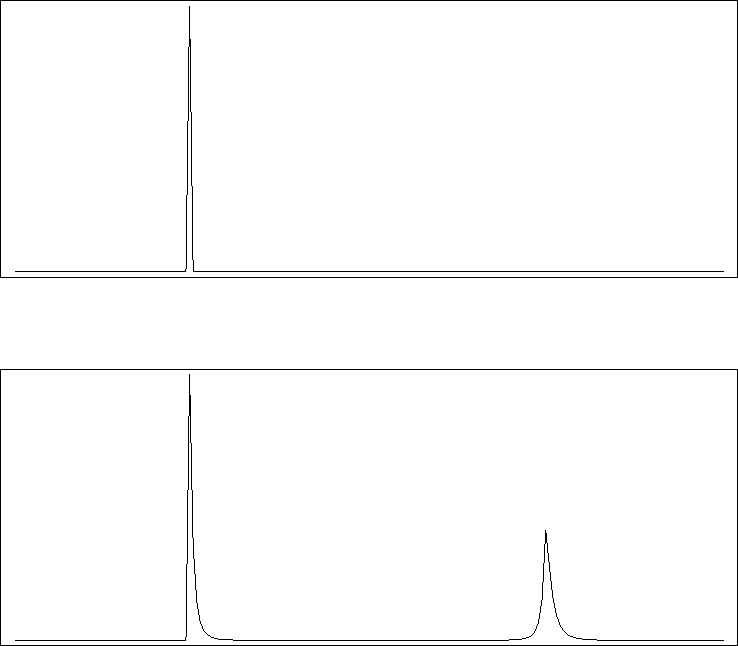| |
(16) |
| |
(17) |
Due to lateral velocity variations, and the desire to avoid spatial
Fourier transforms, approximations to ![]() are often applied
in the
are often applied
in the ![]() domain.
Typically
domain.
Typically ![]() is split into a `thin-lens' term that propagates the
wave vertically, and a `diffraction' term that models more complex
wave phenomena. In the
is split into a `thin-lens' term that propagates the
wave vertically, and a `diffraction' term that models more complex
wave phenomena. In the ![]() domain, the thin-lens term
can be applied as a simple phase-shift, while the diffraction term is
approximated by a small finite-difference filter. The method of
extrapolation determines the nature of the finite-difference
filter.
The mathematical forms of different extrapolators are summarized in
Table 1, and discussed below.
domain, the thin-lens term
can be applied as a simple phase-shift, while the diffraction term is
approximated by a small finite-difference filter. The method of
extrapolation determines the nature of the finite-difference
filter.
The mathematical forms of different extrapolators are summarized in
Table 1, and discussed below.
| Gazdag: | |
| Implicit: | |
| Implicit with helical factorization: | |
| Explicit: | |
| Helmholtz factorization: |
Implicit extrapolation approximates ![]() with a rational form,
consisting of a convolutional filter, and an inverse filter.
The traditional Crank-Nicolson implicit formulation ensures the pair
of convolutional operators,
with a rational form,
consisting of a convolutional filter, and an inverse filter.
The traditional Crank-Nicolson implicit formulation ensures the pair
of convolutional operators, ![]() and
and ![]() , are complex
conjugates, and so the resulting extrapolator is unitary.
Implicit methods apply an extrapolator of the form
, are complex
conjugates, and so the resulting extrapolator is unitary.
Implicit methods apply an extrapolator of the form
| |
(18) |
Although implicit extrapolation is often the method of choice in 2-D, unfortunately the cost of the matrix inversion means traditional implicit extrapolation is rarely possible in 3-D. Helical boundary conditions facilitate 3-D implicit methods by providing a way to decompose the filters into an upper and lower triangular pair, which can be easily inverted Rickett et al. (1998). The extrapolator in equation (18), therefore, becomes
| (19) |
Most practical 3-D extrapolation is done with an explicit operator,
using McClellan transforms. This approach amounts to approximating
![]() by with a simple convolutional filter,
by with a simple convolutional filter, ![]() .Explicit extrapolators, therefore, have the form
.Explicit extrapolators, therefore, have the form
| (20) |
In contrast to these methods, the minimum-phase factorization of the Helmholtz equation provides appears to provide a recursive depth extrapolator of the different form
| |
(21) |
The inverse of the Helmholtz factorization, therefore, is all poles
and no zeros.
However, the apparent contradiction that we are approximating the
unitary operator in equation (17) with the minimum-phase
extrapolator in equation (21) is resolved by
examining the impulse response of the operator ![]() shown in Figure 2. The inverse of the factor is
indeed minimum-phase if you consider the response at depths z
and z+1. However, we are only interested in the response at depth
step z+1, i.e. the second bump in the lower panel of
Figure 2, which is symmetric and tapers to zero away
from the location of the impulse.
We are not concerned by the first bump on
the lower panel of Figure 2, as this corresponds to
the response of the filter at depth step z.
shown in Figure 2. The inverse of the factor is
indeed minimum-phase if you consider the response at depths z
and z+1. However, we are only interested in the response at depth
step z+1, i.e. the second bump in the lower panel of
Figure 2, which is symmetric and tapers to zero away
from the location of the impulse.
We are not concerned by the first bump on
the lower panel of Figure 2, as this corresponds to
the response of the filter at depth step z.
|
impresp
Figure 2 Amplitude of impulse response of polynomial division with minimum-phase factorization of the Helmholtz equation. The top panel shows the location of the impulse. The bottom panel shows the impulse response. Helical boundary conditions mean the second bump in the impulse response corresponds to energy propagating to the next depth step. |  |